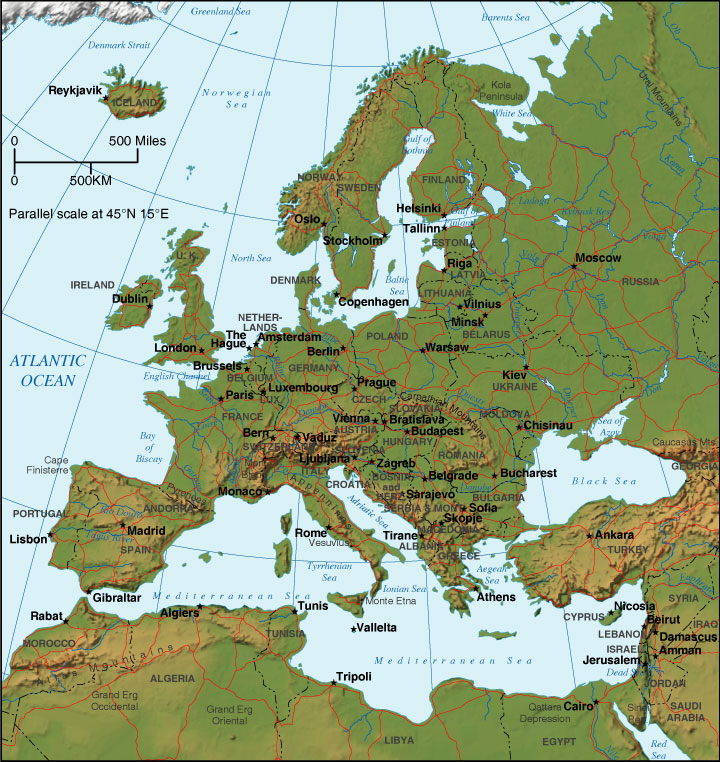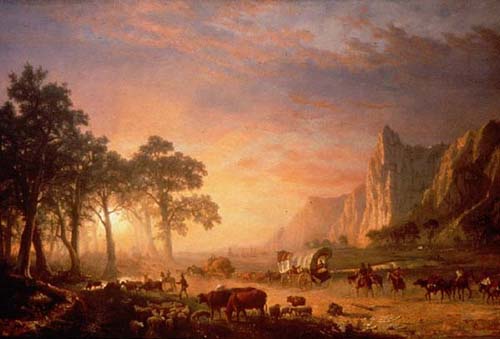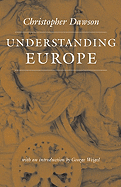 |
| iPod -- postmodern chic |
But our modern civilization is not the norm. Change for its own sake was not universally embraced by our ancestors or other civilizations. Most early civilizations were so conservative that their rulers suppressed change. Ancient Egypt's religion, governance, and art remained essentially static for some 3,000 years -- a staggering length of time spanning almost 3/5's of all humankind's experience with civilization. China's worldview, bureaucratic elite, and linguistic continuity allowed dynasty after dynasty to govern relatively unaltered for thousands of years, until 1911 -- a still more staggering stretch that spanned almost 4/5's of all humankind's experience with civilization.
 |
| These pyramids at Giza were already "older than dirt" -- 2,200 years old -- when Alexander the Great conquered Egypt and was crowned pharaoh |
Noteworthy (because it is the exception that proves the rule) is the one ancient civilization that embraced change, classical Greece. From Thales of Miletus to Ptolemy I, the Greek spirit was relatively open to new ideas. Ptolemy I's example is particularly striking because he ruled Egypt -- already a 3,000 year-old civilization when he arrived; the pyramids he toured were more than 2,000 years old. Ptolemy brought an entirely new spirit to the land of the Nile. At Alexandria, this Hellenistic ruler (1) commissioned the world's then-largest library that housed 700,000 papyri and humankind's first think tank; (2) engineered a harbor to hold 1,200 ships, and (3) erected a lighthouse that guided ships from as far away as 30 miles. In all these projects, Ptolemy exuded Hellenism's embrace of the world. That spirit would powerfully reemerge in the European Renaissance some 1,700 years later.
What Made the West Different?
In a word, it was modernity. But the origins of modernity need to be unpacked to make any sense.
The Renaissance is the name we give to an era in Western civilization lasting from the 15th to the 16th centuries, when new winds began to stir. Blowing across the western Eurasian landmass, these winds made Europe ripe for transformation. What happened in the late Middle Ages to make the West diverge in fundamental ways from its own past and from other civilizations? Why was it Europe that initiated the changes that would transform all humankind? Many factors came into play.
1. The most fundamental factor of all was the nature of the civilization itself. Western Christendom was a cultural mix that brought together (a) Judeo-Christian spiritual aspirations; (b) Greco-Roman philosophical quests including the Hellenistic spirit noted above; and (c) Anglo-Saxon-Germanic political arrangements. The rich elements from these diverse civilizations mixed, reacted, clashed, and catalyzed a new cultural chemistry. This new cultural chemistry matured into the seedbed that would nourish the most powerful civilization on earth. Christopher Dawson explores the West's seedbed in Understanding Europe, as does Russell Kirk in The Roots of American Order. Thomas Jefferson celebrated the Saxon ingredient in the remarkable second paragraph of A Summary View of the Rights of British America.
 |
| Mont St. Michel -- an organic expression of Gothic civilization |
2. The tension and competition that arose within Christendom's numerous nations nurtured societies that tolerated diversity (and as we saw above, classical Greek civilization was a particularly important element in the mix). European society was more tolerant of boundary transgressions and paradigm shifts than societies in the past and in other civilizations had been. Because of history and geography, Europe had more competing states and institutions than any comparable place on earth. If a man's idea did not resonate in the Church, then perhaps it found a home in the state, and vice versa. If the prince of one state did not like an idea, then the prince of a nearby state might. Thus, the freedom to experiment and change became more normative in the West -- more so than anywhere else on the planet. Think of Columbus of Genoa (Italy), whose idea of sailing west he tested with the monarchs of Portugal and England before landing a commitment from the Spanish monarchs of Aragon and Castile. Also think of the Renaissance humanist Erasmus, who was equally at home in Paris, Louvain, Cambridge, and Basel. The social openness to new ideas (even to the point of boundary transgressions and paradigm shifts) explains why so many revolutions -- commercial, religious, scientific, intellectual, industrial, political -- could take root in the West after 1500.
 |
| Kuhn's important study of paradigm shifts |
4. In the case of Europe's domination of the Western Hemisphere, epidemiology reveals a critical factor. Europeans had numerous herd animals; the Indians did not. Such animals migrated throughout Europe after the retreat of Pleistocene glaciers, finding the climate and food supply amenable to their survival. Europeans followed the animals -- pigs, horses, cattle, sheep, and goats serving as their roving Walmart -- and domesticated them. Because of these herd animals, Europeans built up immunities to the diseases that would ravage large populations of (biologically speaking) defenseless Indians. Using contemporary accounts and historical analysis, historians estimate that 50-90 percent of aboriginal Americans died as a result of smallpox, cholera, typhus, and other diseases that large numbers of Europeans had developed antibodies to. In Guns, Germs, and Steel, Jared Diamond writes persuasively of Europe's grain crops and herd animals making a difference in the rise of human inequality in the modern age.
5. Europe's geography is not often emphasized, but it was another important ingredient in the rise of the West over the Rest. Geographically, Europe was always something apart -- not just apart from Muslims, Indians, and Chinese to the east. Geomorphically, too, Europe was different from the rest of the Eurasian landmass of which it is an extension. To see why, look at the globe. The western fifth of the great Eurasian landmass (from about 30 degrees latitude east to the Prime Meridian) starts to break up into numerous peninsulas and islands that are separated by relatively narrow seas, channels, bays, and straits. Europe has a highly irregular coastline in which sizable bodies of water penetrate well into the interior of the continent. Think of the Aegean, Adriatic, North, and Baltic seas, as well as the English Channel and Dardanelles-Bosporus. Furthermore, large rivers -- the Rhine, Rhone, Danube, etc. -- make communication between the interior and salt water ports easy.
 |
| Europe, the westernmost extension of Eurasia, is broken into numerous peninsulas and islands. No comparable landmass on earth is so interpenetrated by water. |
I do not subscribe to geographic determinism, but the numerous peninsulas and islands practically guaranteed that Europeans would be a water people. European geography encouraged people to meet their needs by communicating and trading with each other over the narrow bodies of water that separated them.
 |
| ancient Greek transport ship |
No comparable land mass on earth is so interpenetrated by water as is Europe -- not Africa, not Asia, not Australia, not South America, nor North America -- all of which have smoother coastlines ... though there is one faint comparison in my part of the world. The eastern part of North America presents a geography somewhat similar to that of Europe, with the Chesapeake Bay, Delaware Bay, Hudson River, St. Lawrence River, Great Lakes, and Chicago portage to the Mississippi all affording access deep into the interior of the continent. One hundred years ago, Michigan school children were taught that the Great Lakes amounted to a kind of Mediterranean Sea in the heart of North America.
 |
| The Industrial Revolution transformed the West's economy, society, and landscape. Humankind had never experienced any similar transformation. The Industrial Revolution powered the West over the Rest. |
7. At this point we arrive at another factor, this one more speculative than the others. It involves the development of the European imagination. All the coastlines in the westernmost part of Eurasia encouraged Europeans to build boats, feed themselves from the riches of the sea, and trade with neighboring lands. But I believe it did more. I believe it accustomed people to look not just inward to the interior but outward on the open water. Gazing out at the open sea, a people's imagination will play on the infinite possibilities of the distant horizon (actually 17 miles out). The broad horizon becomes the basic unit of the imagination. This experience is unlike that of the original riverine civilizations -- Sumer, Egypt, India, China -- where peoples made their living from the earth and looked to a small hinterland for material security.
Psychologically, a distant horizon on the open sea incites wonder and restlessness. What's out there? Who's out there? What are people doing on the other side? Isn't this why we are attracted to sea coasts? We are suspended in wonder before the other, the infinite. Our mind, daydreaming, is mesmerized by the rhythmic surf. Here in the Great Lakes State we have this experience when we go to the sand dunes on Lake Michigan on a clear day and look west toward Chicago and Wisconsin. Looking out over Lake Michigan makes me think about Europeans through the ages. More than any other peoples on earth, Europeans are Homo viator, sojourners.
 |
| on a Greek ship, c. 530 B.C. |
Three Paradigmatic Stories
There are three great stories that Western culture has absorbed to define our restlessness, curiosity, and sense of wonder. One is from a Greek epic poem, one is from a Roman epic poem, and one is from Hebrew sacred scripture.
 |
| Replica of Odysseus's ship |
In Virgil's Aeneid, Aeneas leaves a Troy devastated by war, sails west on the Mediterranean, and founds a new people and a new city, Rome -- in the imagination of many, a symbolically significant home called the "Eternal City."
In the Exodus, Moses leads the Hebrews to the Promised Land, the land of milk and honey -- a journey that in part retraces the steps of Abraham and the Patriarchs, a journey that leads them back toward Eden where the first humans knew perfect truth, goodness, beauty, and love.
Pilgrims sojourn, they seek change -- sometimes with a changeless end in mind.
We Continue to Search for Eden
After 1500 A.D. these three stories became paradigmatic in the Western imagination. They symbolize European restlessness, the quest for something better. I'd allow that the perennial human search is for the true, the good, and the beautiful.
 |
| Albert Bierstadt, Oregon Trail |

Thank you for the fruitful tutorial, which you have turned into this thoughtful essay. It is always a pleasure to learn from you.
ReplyDelete